by Dolores Pulella
XIBIT contemporary art mag 2021
Over the years, Berliner photographer Karen Stuke has established a special bond with the Neapolitan theatrical tradition through the use of the anachronistic pinhole camera. One of her recent works, still in progress, is the “Caruso sings again” project, currently hosted in the space she created in Kronenboden in Berlin; it is an artistic research on the life and places of Enrico Caruso, from his time until today, which unfolds through photographs taken by the artist, and a collection of period photographs, records, stamps, newspaper articles, books, advertising posters and movie posters, costumes, and various objects.
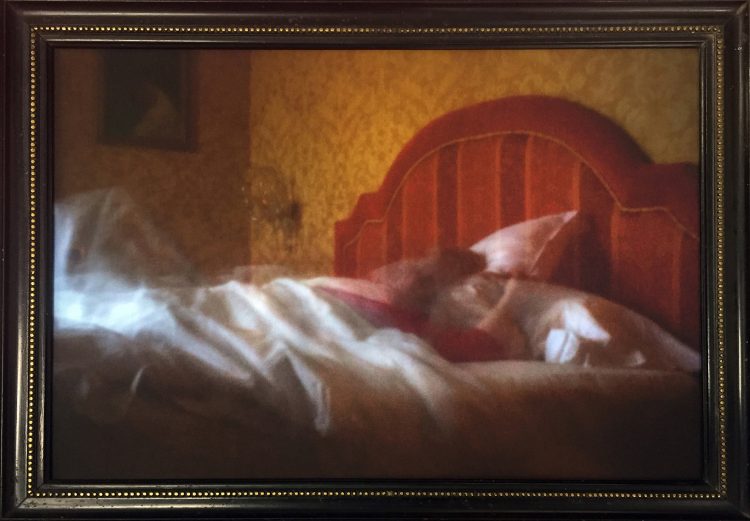
This is just the latest work that Stuke has dedicated to performance arts; after her studies in Photo/Film Design at the Bielefeld University of Applied Sciences under the master Gottfried Jäger, which she completed in 1999, Karen Stuke immediately began to collaborate with the most prestigious opera houses in the world like Vienna, Berlin, Paris and Los Angeles just to name a few.
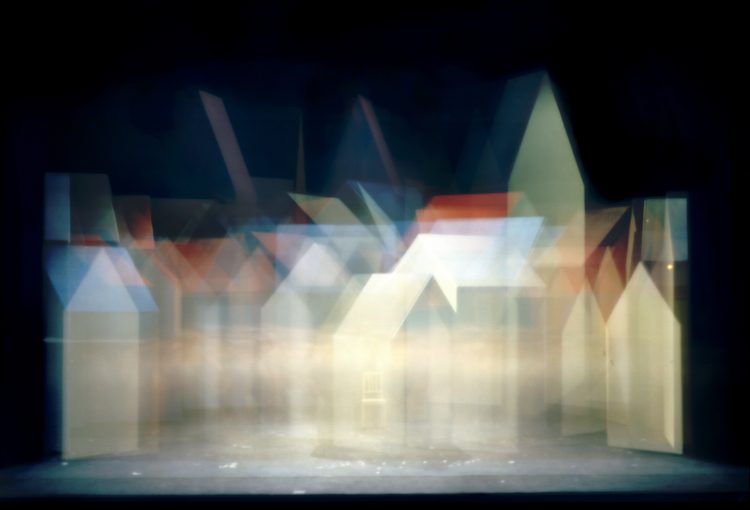
In addition to the theatrical space, the other paradigm that the pinhole instrument allowed her to investigate is the realm of sleep. The “Sleeping Sister” series is from 2008, entirely based on images of her sister as she sleeps in different countries. The exposure time is proportional to the duration of sleep, which is why it is very long as is required by the technique used by Stuke, based on the darkroom method. In the photographs everything is still except for the body of the person sleeping, whose movements are visible as traces that leave trails. In these images, as well as in others by the artist, one of the fundamental components is light, which allows us to perceive scenarios that are usually hidden from us by the depth of darkness. For Stuke, light is more than a medium, it is the subject of photography itself. The other essential component in her work is the space to which the images are only linked and created within, and then there’s the movement, which appears as fleeting as it is not registered in the single moment of the shot, but holistically and with a temporal duration. The hours pass as the darkroom gradually collects and saves images from the depth of darkness. The result is slow and calm images, everything is recorded by the lens except for the dreams of the sleeper.
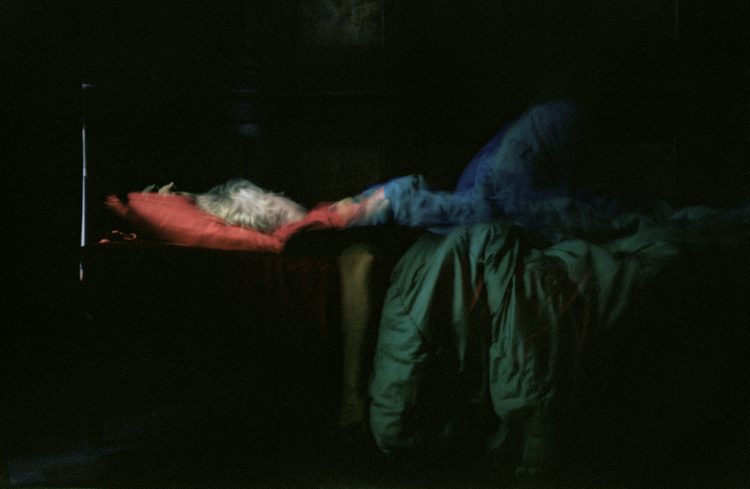
Light, space and movement always return as essential elements of the artist’s work also in “City Lights”, a series exhibited in 2009 at the Elipsis Gallery in Istanbul, in which light is precisely the tool Stuke uses to to draw authentic and creative perspectives through space. The pinhole camera helps in the attempt to search for spatial intervals of the city lights to bring them to an eternal dimension. The photographs were taken on top of those towers that are found in large metropolis and that rotate slowly without people noticing; through this trick the eye of the camera remains still while in reality it records the slow movement of the tower, and the image changes constantly, returning a photograph created beyond time and space, which bears the title of the city in which it was made, such as Frankfurt, Auckland, Istanbul, New York.
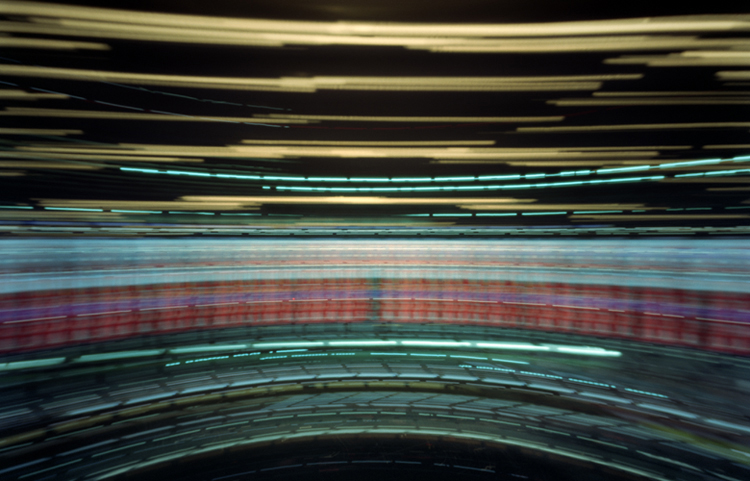
In 2010 Karen Stuke was invited to Naples for an artist residency by the Primo Piano Gallery as part of the “Napoli Teatro Festival Italia”, which gave birth to an artistic project that underlines the strong link between Naples and dramatic art, entitled “Opera Obscura”, exhibited at the Palazzo Delle Arti in Naples and at the same time also in the spaces of the Primo Piano Gallery which has dedicated a focus to Stuke’s work conducted over the years in the most famous theaters in the world.
For “Opera Obscura” the artist kept working with the pinhole camera, recording the entire performance of the shows staged during the festival on single frames. Speaking of these images, her teacher Gottfried Jäger, known for being the inventor of “Generative Photography”, said: “They are a visible expression of the deep desire to respond to the extravagant world of theater with the extravagance of images. This extravagance has its own sumptuous, full, baroque effect. The idea of compressing a theatrical work into a single image is both courageous and poetic. On the other hand, everything that may appear different and obscure is legible and enjoyable to an attentive eye. Light has a new thickness, it almost seems that the images are backlit, there is a slow and constant layering of light that takes on an unreal and mystical aura”.
“Austerlitz” dates back to around 2012 and is the series of photographs that Karen Stuke created inspired by the masterpiece made in 2001 by W.G. Sebald. The novel is a reflection on lost and recovered time, which tells the story of Jacques Austerlitz, a historian of architecture who at the age of five was sent from Prague to England, to the home of adoptive parents. When Austerlitz learns of his past, he begins a space-time journey from the Central Europe of the mid-twentieth century to the England of his days. And it is precisely the journey of Jacques Austerlitz that becomes the object of investigation and reflection of Stuke, who through her inseparable pinhole camera takes photographs based on the places in Sebald’s story, from the Jewish cemetery in Prague, to the gymnasium from which Austerlitz’s mother was deported to the Theresienstadt extermination camp, to the journey to the new homeland and home in the Mile End. The images are elusive and cling to intermittent blurred memories. Initially this work, titled “Stuke- After Sebald’s Austerlitz”, was commissioned by The Wapping Project and financed with funds from the Women’s Playhouse Trust, exhibited in 2013 in the London neighborhood of Wapping. Collateral project to “Austerlitz” was the exhibition “Salle des pas perdus- Wandelhalle” which was held at the Kommunale Galerie in Berlin in the autumn of 2019, in which the artist, together with Jules Wright, curator of The Wapping Project, set up a path with large-format photographs from the “Austerlitz” series, and of the key places in Sebald’s tale, crossed by the installation consisting of a railway track and the voices of Jewish people reading the story.
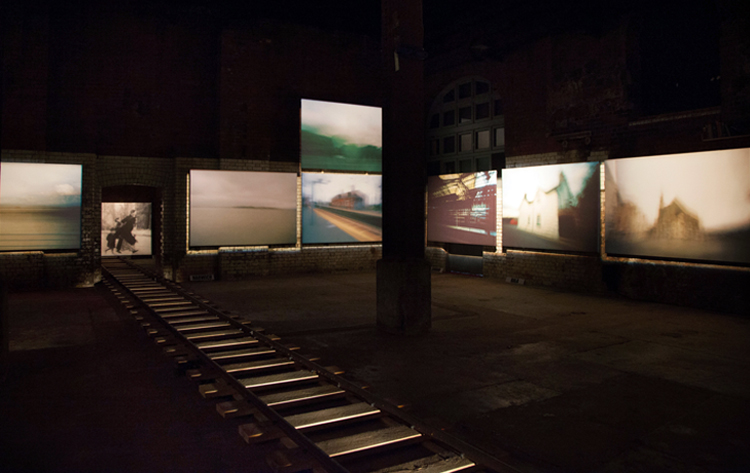
The fact that a German artist was chosen for a work that has to do with the Holocaust perpetrated by the Nazis against the Jewish people should not go unnoticed; Karen Stuke during the making of the work was fully aware of this, and the creative process was a reflection that was carried out not without a certain amount of suffering.
Karen Stuke was among the artists selected during the 2020 edition of the Castelnuovo Fotografia Festival, by the scientific committee with the series “Hotel Bogotà”, created in 2012, which was already exhibited in 2019 in Naples at the Primo Piano Gallery. For three years, starting in November 2012, the artist stayed in forty-five rooms of the iconic hotel in the Charlottenburg district of Berlin; the agreement with Joachim Rissmann, the hotelier, provided that Stuke could sleep during each of her temporary stays in a different room, and the artist also spent the last night at the Bogotà before the final closure on December 24, 2013. That day marked the end of an era in Berlin history. The Hotel Bogotà was the place where Benny Goodmann played, the Jewish photographer Yva stayed with her young assistant Neustadter, known by the name of Helmut Newton, as well as the transit place of several artists such as René Burri, Martin Parr, Nan Goldin, Hannah Schygulla. The building that housed the hotel, during the war period became the “Chamber of Culture of the Reich”, the institution that had to fight “degenerate art”. After the war, it was then converted into a hotel, and the name Bogota was given by the hotelier Heinz Rehwala who had fled the Nazis and took refuge in the Colombian capital.
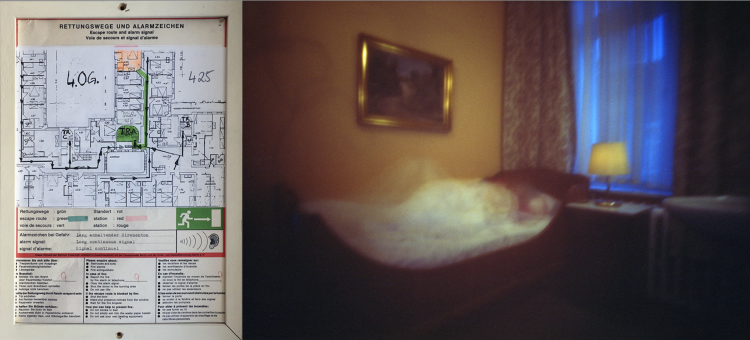
With “Hotel Bogotà” Karen Stuke goes back to reflect on the act of sleeping, as she did in “Sleeping Sister”; each exposure time corresponds to the duration of the overnight stay, the place of dreams and sleep. The series of images that Karen Stuke gifted us with these photographs echo two works by Sophie Calle, “Les Dormeurs” from 1979 on the one hand, and “The Hotel” from 1984 on the other. If in the first series the French artist invites to sleep in her bed for eight consecutive hours, one after the other, twenty-nine people between acquaintances and strangers to catch them in their sleep by taking a photograph every hour, in the series made in 1984 Calle gets herself hired as a maid of the Hotel C in Venice in order to be able to photograph the hotel rooms for three weeks and at the same time build a narrative about the residents she has never met, if not only through the objects they left behind. Karen Stuke with “Hotel Bogotà” seems to summarize in a single artistic effort both aspects of Sophie Calle works.
